
This Spring has been great in Michigan. Our family keeps a running yard list of new migrants as they arrive. We also keep our eyes peeled for other early migrants and animals coming out of hibernation, like snakes, frogs, toads and butterflies. The first sunny day we had in the 50s I went out in search of jumping spiders and discovered a Zebra Jumper on the siding of the house. OK, I’m sure a certain percentage of you think I’m nuts for looking for them at all, never mind celebrating finding one. Anyhow, I was really happy to see the little guy. I’m not sure it found anything to eat, but it was nice to see it out hunting on a relatively warm day.
This sketch is of a Male dark phase Dimorphic Jumper. Although half of the males are supposed to be Dark Phase, I almost always find the grey ones around the house. They really look like a completely different species. Compare this guy to the light phase jumper here. Maybe they are just a bit better at hiding on our house? I’ve been itching to get good photos for a painting. Last summer I finally had some cooperative subjects. In this sketch I tried to introduce a bit more depth of field than what existed in the photos I took.
Photographing the jumping spiders is challenging and fun. Sometimes I shoot them in the yard where I find them. Other times I’ll carefully catch them and photograph them in a light tent that I have set up in the basement. Once their photo shoot is over, I’ll gently coax them back into a film canister and transport them back to the great outdoors. My indoor lighting setup has been evolving over the years. Currently I’m using a homemade diffuser tent made of PVC, wood and ripstop nylon with 3-4 flashes tripped by optical slaves. The tiny size of the jumping spiders has me using a Canon 100mm f2.8 macro with 20-68 mm of extension tubes. Typically I turn off the auto focus since the depth of field is razor thin. I achieve focus by moving the plants that the spider is sitting on. These little guys move pretty darn quickly, and getting a decent shot can take a long time.






My main goal with the tent is to get nice even lighting with very soft shadows. That can be hard to accomplish with macro photos since they require so much light. The extension tubes I use to gain magnification causes a further decrease in light. I’m typically shooting at ISO 200 at around f20 at 1/250th. Even at f22 there is almost no depth of field at this magnification. Some macrophotographers focus stack images, taking numerous images and then compositing them to get the sharpest parts of each photo. I spend enough time working in Photoshop for my day job. I prefer to do my editing in camera. As far as post processing in Photoshop, I occasionally crop images and frequently edit out dust on the sensor that is dramatically amplified with the extension tubes and high f stops. Otherwise the images you see are pretty much straight from the camera.




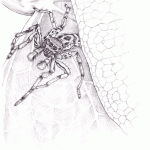
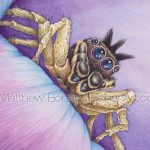
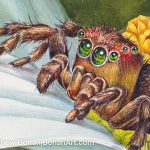
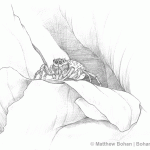
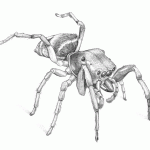
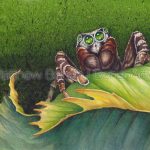
Leave a Reply